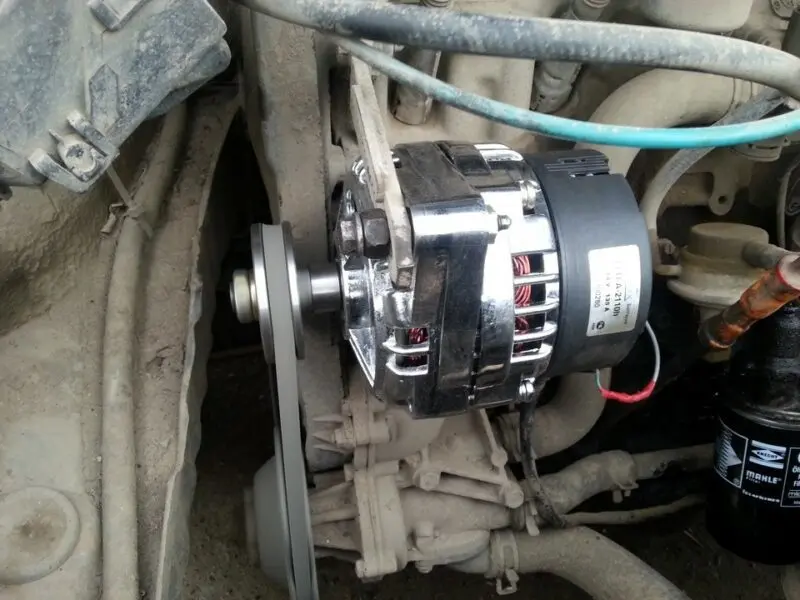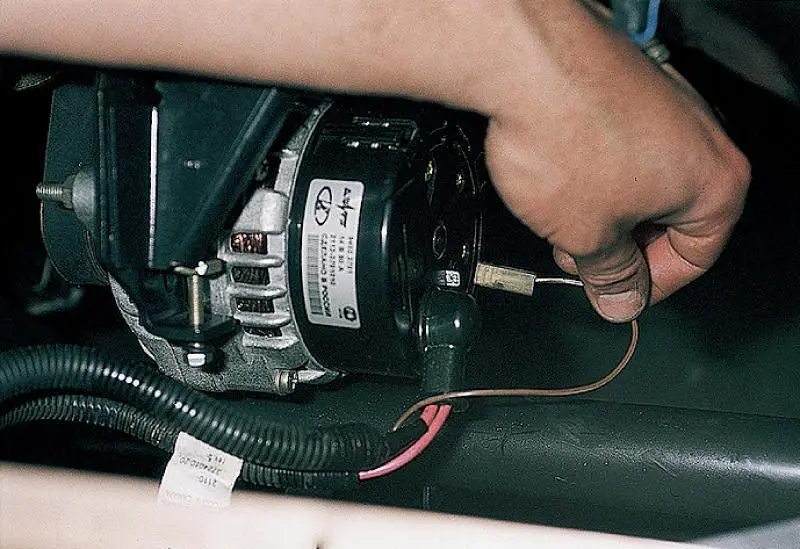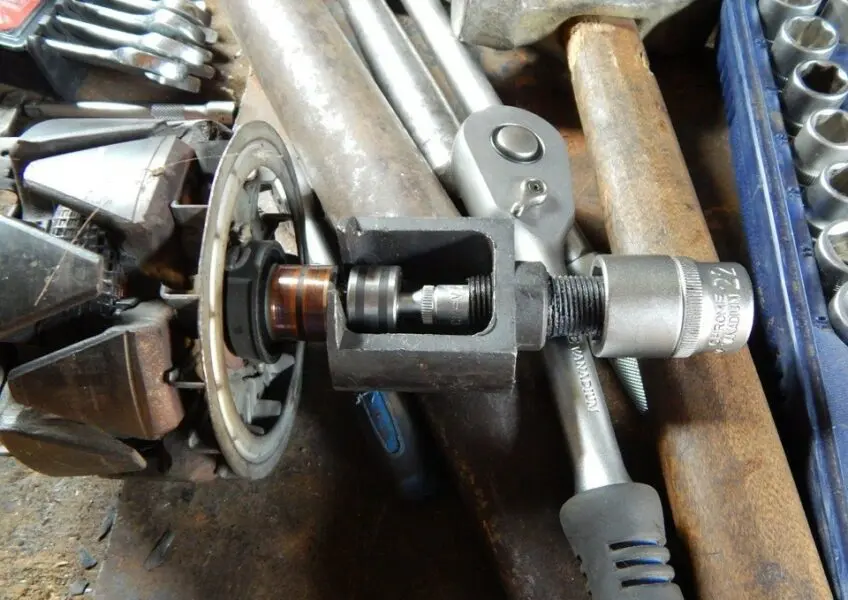
How to eliminate generator noise, replace bearings
Content
The most common generator breakdown (in addition to brush wear) is the failure of its bearings. These parts are under constant mechanical stress. Other elements are more exposed to loads associated with the work of electromagnetic processes. The design of this mechanism is considered in detail. in a separate article.
For now, let's focus on how to replace the generator bearing.
Why there is noise
Although the generator is one of the most stable mechanisms, no car is immune to its breakdown. Often the malfunction is accompanied by noise from the bearings. If the driver hears a squeak, this indicates a poor belt tension. In this case, the situation will be corrected by his stretch. To learn how to check the performance of other generator elements, read separately.
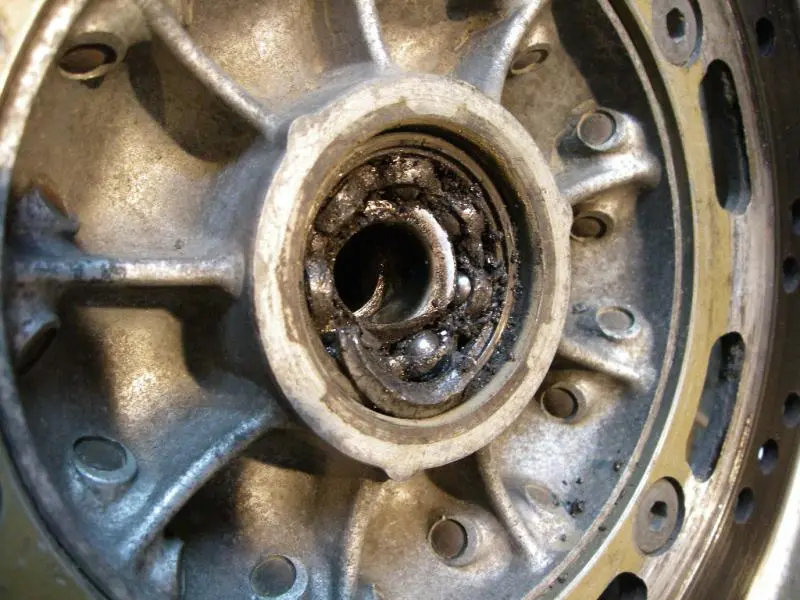
Bearing wear is always indicated by a hum. If the driver begins to hear such a noise from under the hood, do not hesitate to repair it. The reason is that without a generator, the car will not go far, because the battery in the vehicle's electrical system acts as a starting element. Its charge is not enough for driving.
A worn bearing starts to make noise because it has a strong connection to the engine crankshaft. The forces are transmitted to it through a pulley. For this reason, the noise will increase with increasing revs.
How to eliminate generator noise?
There are only two ways out of the situation. The first is the simplest, but at the same time the most expensive. We just buy a new mechanism and drive until the old one "dies". Then we just change it to a new one. It should be borne in mind that a breakdown can occur at the most inopportune moment, when it will not be possible to carry out repairs, and you need to go urgently.
For this reason, as well as for economic reasons, most motorists, after the appearance of noise from the generator, buy new bearings and go to auto service. Well, or they are trying to replace the part on their own.
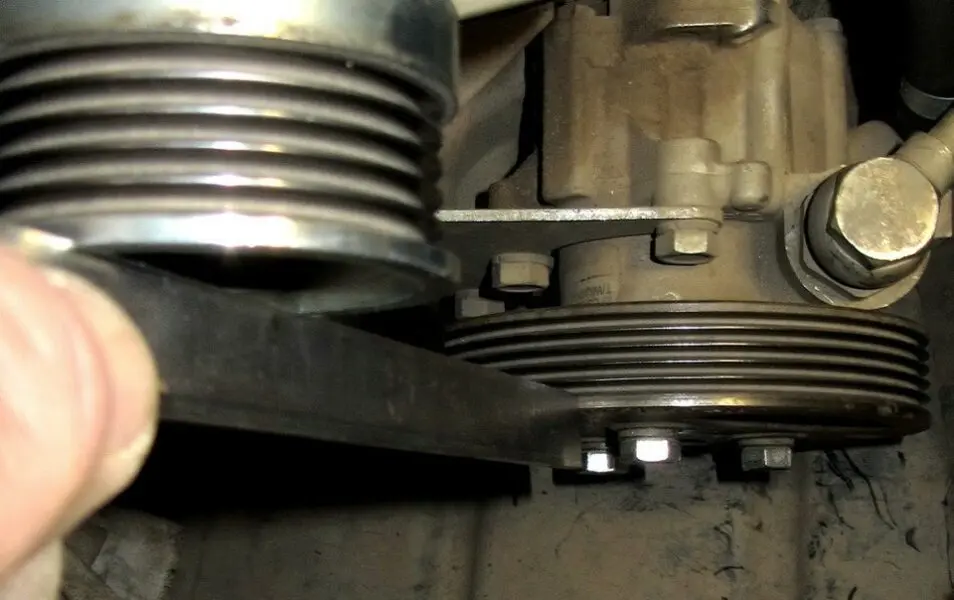
While replacing a part seems simple at first glance, it requires some skill. For this reason, not everyone will be able to do this efficiently without damaging the mechanism.
How to understand bearing failure?
First, you should make sure that the noise is really related to the breakdown of the generator. Here's how you can verify this:
- We raise the hood and conduct a visual inspection (the design of many cars allows you to see the generator like this). This simple diagnosis will help you see cracks and other damage in the pulley area;
- Sometimes a steady hum is removed by tightening the fan nut. If the mount is loose, a decent noise can also be generated during the operation of the mechanism;

- You can disassemble the generator and check its electrical part;
- Poor contact between brushes and rings can produce similar noise. In this case, you will also have to remove the device, unscrew the cover and clean each ring on the shaft. In order not to damage the elements, it is better to do this with a soft cloth, having previously moistened it in gasoline. If the hum remains, then it is definitely a bearing;
- The front bearing is checked for play. To do this, the lid swings and turns (efforts should not be great). At this point, the pulley must be held. Backlash and uneven rotation (sticking) indicate bearing wear;
- The rear bearing is checked in the same way as the front bearing. To do this, we take the outer element (ring), and try to swing it and spin it. Backlash, jerking, tapping and other similar signs indicate that the part needs to be replaced with a new one.
Signs of an unusable generator bearing
In addition to visual diagnostics, indirect signs of failure of one of the bearings (or both at once) are:
- Extraneous noises (for example, knocking, hum or whistling) coming from the mechanism during the operation of the power unit;
- The structure gets very hot in a short period of time;
- The pulley slips;
- An on-board voltmeter records surges in charging rates.
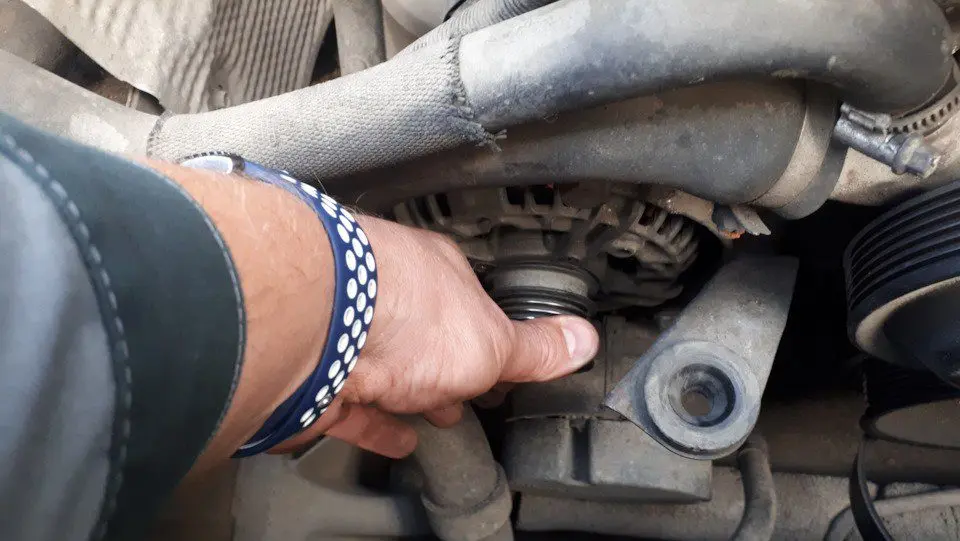
Most of the "symptoms" can only indirectly indicate bearing failures. Often these symptoms are identical to faults in other elements.
How to replace a generator bearing?
The bearing must be replaced carefully so as not to accidentally scratch the slip rings, winding, housing and other important parts of the device. To complete the work, you will need to use a hammer and a screwdriver. Also, you can't do without a puller.
Here is the sequence of the procedure:
- To prevent a short circuit in the car, you must disconnect the battery. Although, when dismantling the generator, it is enough to disconnect the minus itself;
- Next, you need to unscrew the fasteners of the wire terminals on the device itself;

- We unscrew the fasteners of the mechanism. In many cars, they fix it on the frame, but there are other fixing options, so you should start from the design of your car;
- After dismantling, we clean the entire mechanism. Fasteners must be lubricated immediately;
- Next, remove the front cover. It is fixed with latches, so it is enough to use a flat screwdriver to pry it;
- With a figured screwdriver, we dismantle the brushes and the voltage regulator;
- We dismantle the casing that blocks access to the front bearing (it can be removed in the same way as the cover);
- Some motorists, in order to press out the part, clamp the generator armature in a vice. Then the bearing is pryed on both sides with open-end wrenches. This procedure must be performed carefully so as not to spoil the part. The easiest way to do this is with a special puller;

- The same procedure is carried out with the second element;
- Before installing new parts, the shaft must be cleaned to remove dirt and accumulated plaque from it;
- There are several types of bearings. Some need lubrication, while others are pressed into the cage and are already lubricated;
- The new part is installed on the shaft (while the anchor is fixed in a vice) and pressed in with a hammer and a strong hollow tube. It is very important that the diameter of the tube matches the dimensions of the inner part of the ferrule;
- Installation of the front bearing in the rolling element housing is also done with a hammer. The only difference is that now the tube diameter must match the diameter of the outer part of the ferrule. It is better to use the tube when pressing in the parts, rather than gently tapping the bearing with a hammer. The reason is that in the second case it is extremely difficult to avoid skewing the part.
At the end of the repair work, we assemble the generator, fix it in place and tighten the belt.
Watch also a video - an example of how to work at home:
Questions and answers:
Can I ride if the generator bearing is noisy? It is undesirable to do this, because when the bearing is blocked, the generator will stop generating energy for the on-board system of the car. In this case, the battery will be discharged quickly.
How to understand that you need to change the bearing of the generator? Listen to the generator while the engine is running. Whistling noises, hum - a sign of a malfunction of the generator bearing. The pulley can turn, charging is unstable, quickly and very hot.
Why is the generator bearing making noise? The main reason is natural wear due to the production of lubricant. This will cause the bearing to make noise. It is not worth delaying its replacement, as it can break under heavy load.

